The Spanish capital is home to a myriad of restaurants, taverns and bars whose walls have paid witness to 100s of years of history. These centenarios offer a portal into the city’s rich past through their recipes passed down from generation to generation.
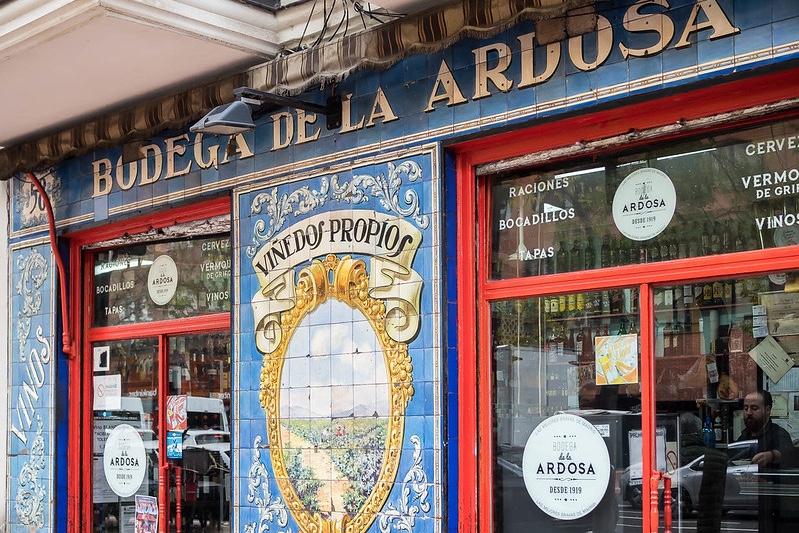
Bodega La Ardosa first opened in 1892 (Photo: Víctor Castelo Gutiérrez via Flickr / CC BY 2.0)
Shaped by an ever-evolving society, Madrid’s centenarios (a word denoting that it has been open for 100 years or more) are restaurants and taverns that practically served as secondary homes to bull fighters, writers, politicians and other local celebrities. Withstanding the test of time, to this day their menus often still contain the very same dishes that were dined on over a century ago, many of which have contributed to the popularity of Spanish cuisine around the globe.
The Basics of Visiting Madrid’s Centenarios
You’ll encounter these centenarios in Madrid’s oldest neighbourhoods, recognisable by their timeworn façades, gold leaf lettering, and hordes of hungry customers. But don’t let the crowds put you off. These eateries are popular thanks to their culinary tradition and antiquated interiors, and Madrileños (the locals) have no qualms about pushing their way through to the bar to shout their order over the cacophony of conversation.
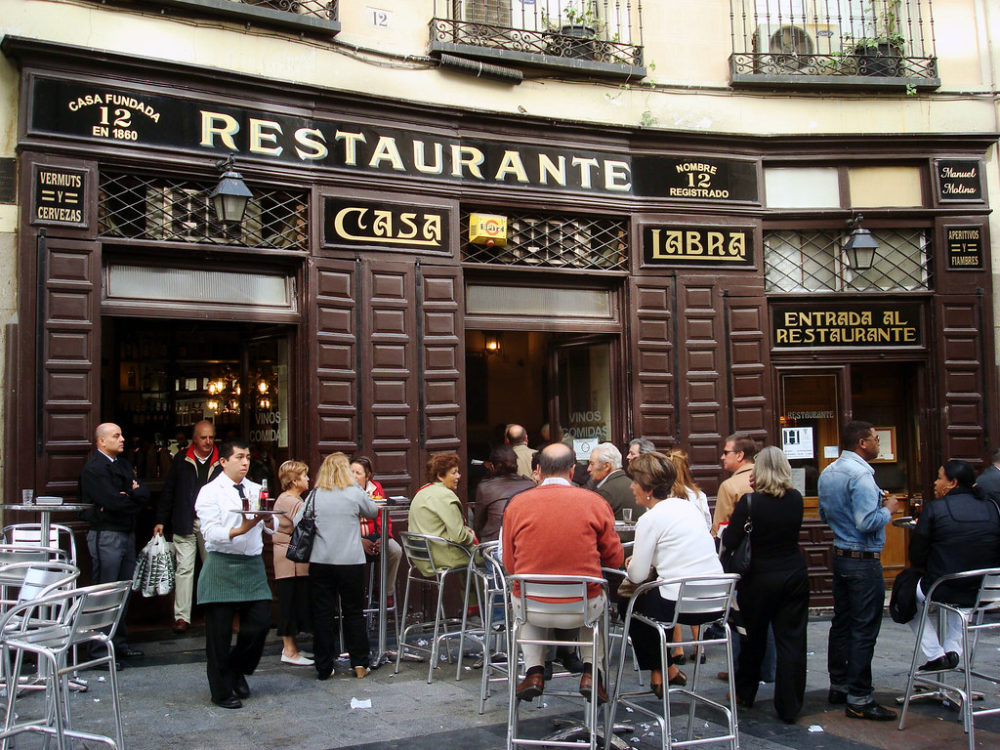
Casa Labra, Madrid (Photo: Patricia Mikkelsen via Flickr / CC BY 2.0)
To do as the locals do, order a few tapas in the bar area as a delectable pre-lunch appetiser or before moving on to the next spot. You’ll most likely find the day’s offering jotted on a dusty chalkboard hanging above the counter. Staff are generally more than happy to translate; however, don’t feel shy about ordering by pointing to what the table next to you are having and saying “eso, por favor”. If you’re there during the lunchtime bustle (between 1pm–3pm), be ready to rub shoulders with local clientele, raise your voice to get the barman’s attention, and even eat standing up; learning how to balance your caña (small beer) in one hand and tapa in the other is all part of the fun.
If you’re in the market for a sit-down meal, grab a table in the dining area. Despite being overlooked in contemporary cuisine, offal was commonly used in many traditional Spanish recipes, for example callos (simmering tripe casserole) and mollejas (slow-cooked sweetbreads) being but a few of the local delicacies. A less offal-centric option is carrillada de ternera (stewed beef cheek). These á la carte options are served in larger portions that are perfect for sharing, along with a glass of wine.
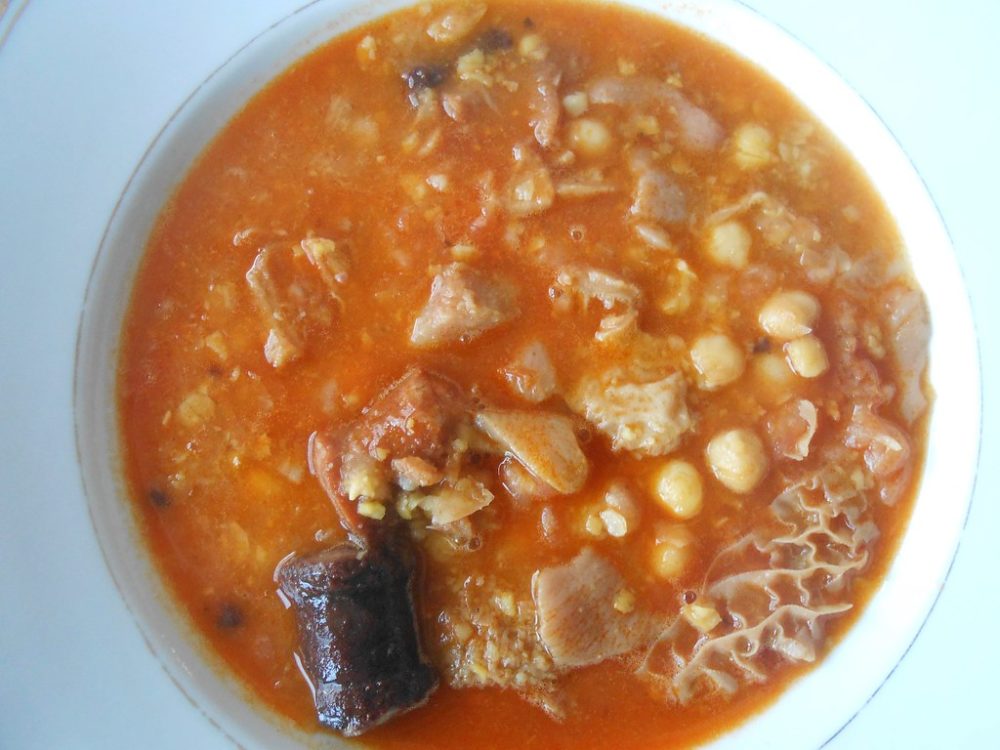
A hearty dish of tripe casserole (Photo: Rolf Stühmeier via Flickr / CC BY 2.0)
Must-visit Centenarios
Spending a morning rifling through knickknacks at the stalls of Madrid’s famous Rastro flea market is enough to get anyone’s appetite going. As your stomach starts to rumble, turn down Calle de la Ruda to find Malacatín at number 5. In the winter months, a sizeable bowl of cocido (beef and chickpea stew) will warm you up from head to toe. The story goes that the strange name of this quaint eatery – established in 1895 as a store selling spirits and liquor – comes from the songs a sprightly busker would sing at its door to welcome customers. Passed down through four generations of the Díaz family, there isn’t an inch of its walls not decorated in relics of its colourful past.
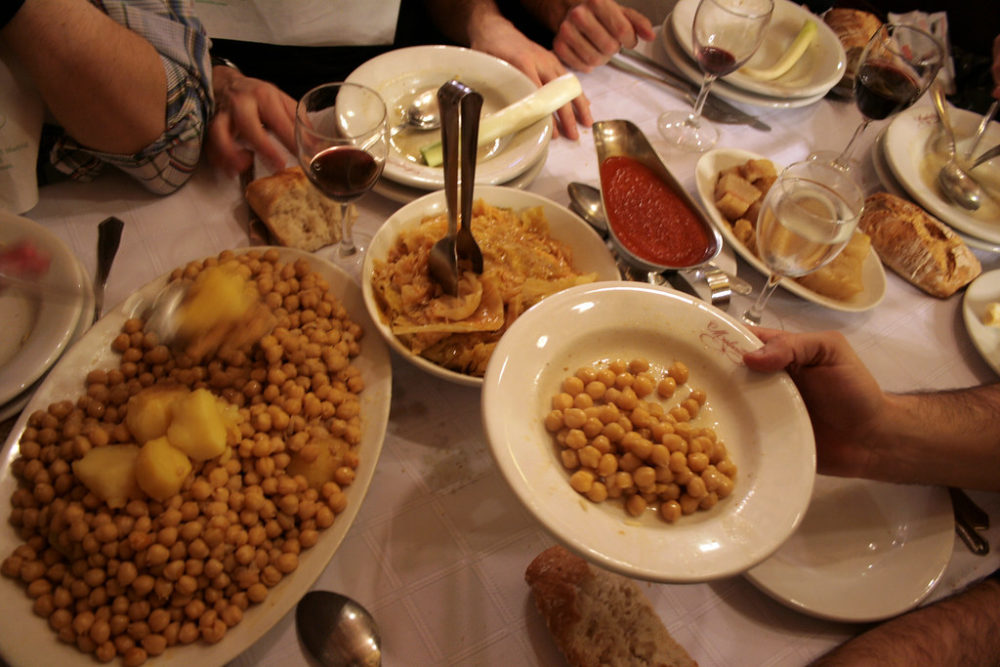
Cocido for four at Malacatín (Photo: Óscar Palmer via Flickr / CC BY 2.0)
For a substantial (and very affordable) three-course lunch menu, head to Madrid’s oldest tavern for a menu del día. Dating back to the late 1700s, Taberna Antonio Sánchez (Calle del Mesón de Paredes, 13) in Lavapiés still conserves many of its original features, including an intricately carved mahogany bar counter and wooden-panelled walls with mounted bull’s heads. Favourites on the menu include carrillera de ternera (veal’s cheek), oreja de cerdo en adobo (marinated pig’s ear), and mollejas de cordero (lamb sweetbreads) in a Pedro Ximénez sauce served on a bed of creamy mashed potato. For a more intimate setting, there’s a brick-lined wine cellar with room for just one or two tables.
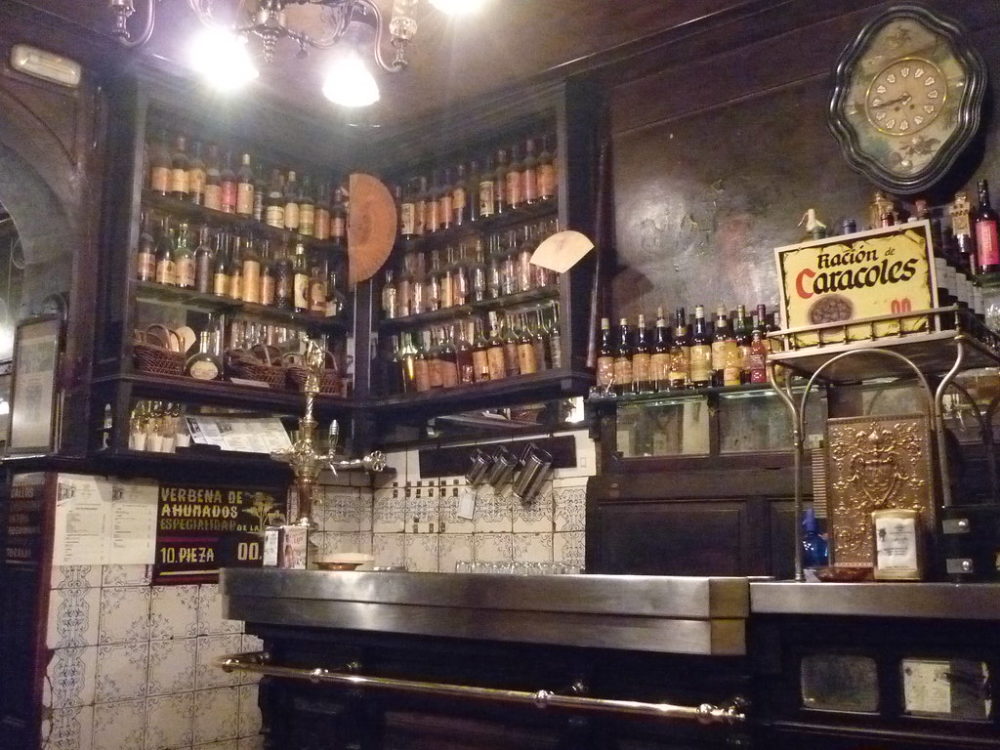
The bar at Taberna Antonio Sánchez (Photo: José Alejandro de la Orden via Flickr / CC BY 2.0)
In Madrid’s literary and arts quarter – known locally as the Barrio de las Letras – stands Casa Alberto (Calle de las Huertas, 18). Soon to turn 200, Casa Alberto is said to occupy the very same building where Cervantes penned his novel Journey to Parnassus, almost 10 years after his masterpiece Don Quixote. Here you’ll find deep-red vermouth on tap, classic Spanish dishes, and tapas with a contemporary twist – it’s no wonder locals flock here at lunchtime and on weekends. Culinary highlights include confit artichokes topped with cured Iberian ham and a dashing of parsley sauce, and smoked sardines with a tangy tomato preserve.
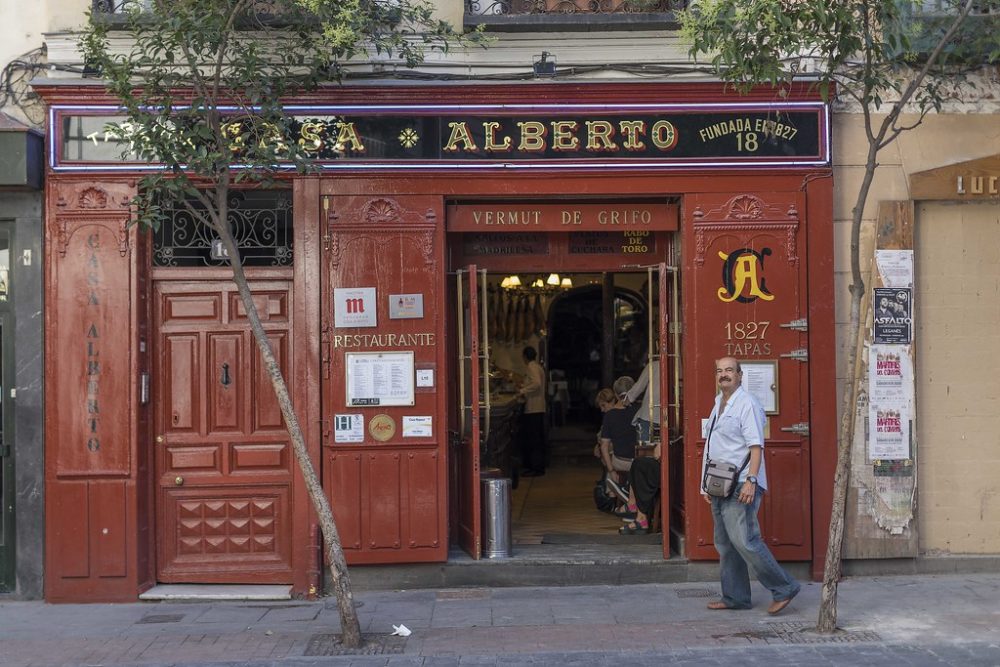
Casa Alberto, Madrid (Photo: Agustín Hernández via Flickr / CC BY 2.0)
South of Madrid’s Puerta del Sol is Casa del Abuelo (Calle Victoria, 12), specialising in prawn dishes and serving a hand-picked selection of Spain’s best wines. Order prawns en gabardina (coated in a thick batter and fried until piping hot), al ajillo (marinated in garlic and sprinkled with parsley), or simply a la plancha (lightly grilled in their shell). Wash them down with a glass of El Abuelo house wine; fresh, fruity, and sweet on the palate.
If you like a bargain or still haven’t got your fill of seafood, just around the corner from Sol is Casa Labra (Calle de Tetuán, 12). Since 1860, Casa Labra has been serving cod cooked every way you can imagine. Tapas include tajadas de bacalao (fried cod slices) and breaded cod croquetas. Crispy on the outside, hot and creamy on the inside, it’s impossible to only have one. The á la carte menu includes over eight different cod dishes to choose from.
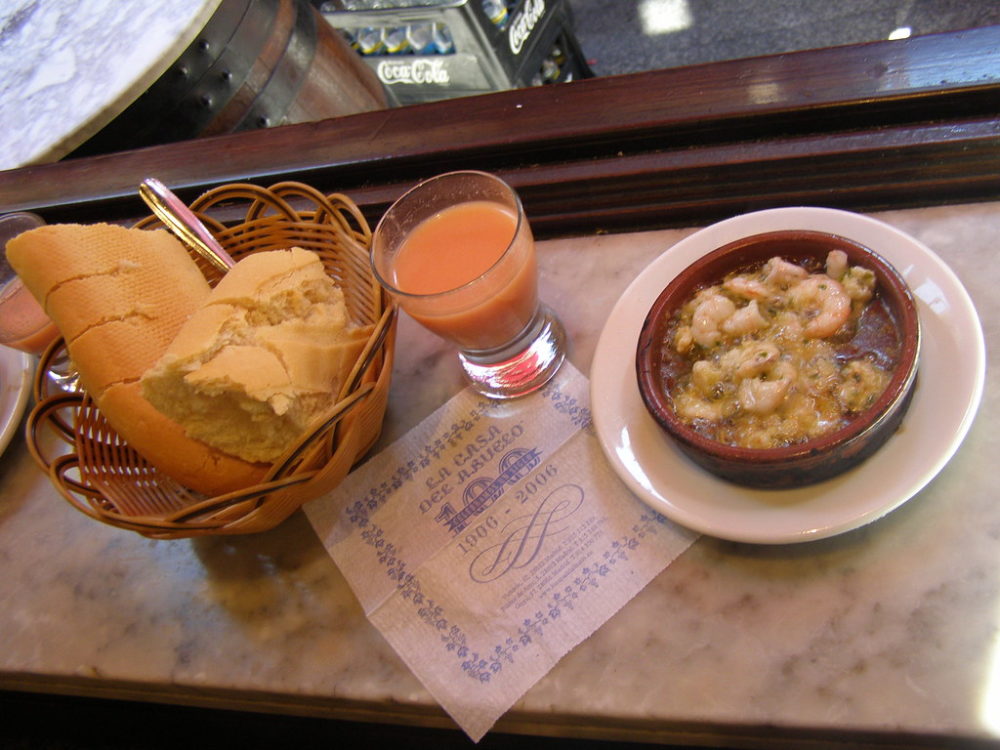
Gambas al ajillo served with a glass of gazpacho at Casa del Abuelo (Photo: Linda Lou via Flickr / CC BY 2.0)
Within walking distance of the city’s green lung – the sprawling El Retiro Park – is Café Gijón (Plaza de Recoletos, 21). Steeped in literary history, this cultural café-restaurant saw the likes of Lorca, Hemingway and Valle-Inclán pass through its doors. To this day, it still hosts book presentations and philosophical debates, and it’s not uncommon to spot local artists and writers putting the world to rights. Some dishes nod towards its Asturian heritage, such as order cachopo, a sizeable succulent breaded veal fillet wrapped in Iberian cured ham and melted goat’s cheese. More adventurous foodies might like to try callos. This rich ox tripe stew, traditionally eaten by the working class, rose to fame in Madrid’s taverns.
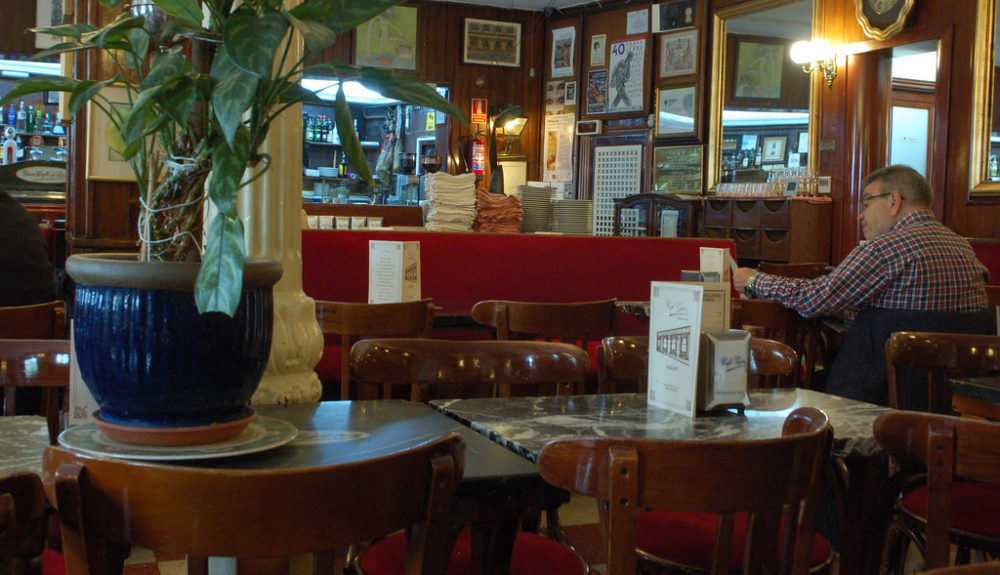
A local reading the newspaper at Café Gijón (Photo: Aurora Cardenillo via Flickr / CC BY 2.0)
The thriving area of Malasaña is home to independent bookstores and local shops that stand side by side with some of the city’s oldest bars and restaurants. One of which is the charming Bodega La Ardosa (Calle de Colón, 13). Word has it that this centuries-old eatery serves one of Madrid’s best tortilla de patatas (Spanish omelette). Served firm on the outside and with a warm, gooey centre, it pairs perfectly with a somewhat non-traditional freshly pulled pint of Guinness. Once you’ve ordered, duck under the bar counter to find more seating at the back in a dimly lit area with wooden panelling and tarnished mirrors. This cosy corner serves as a fitting last (or first) stop to rest your feet, plan your next outing, and sample the numerous international ales.
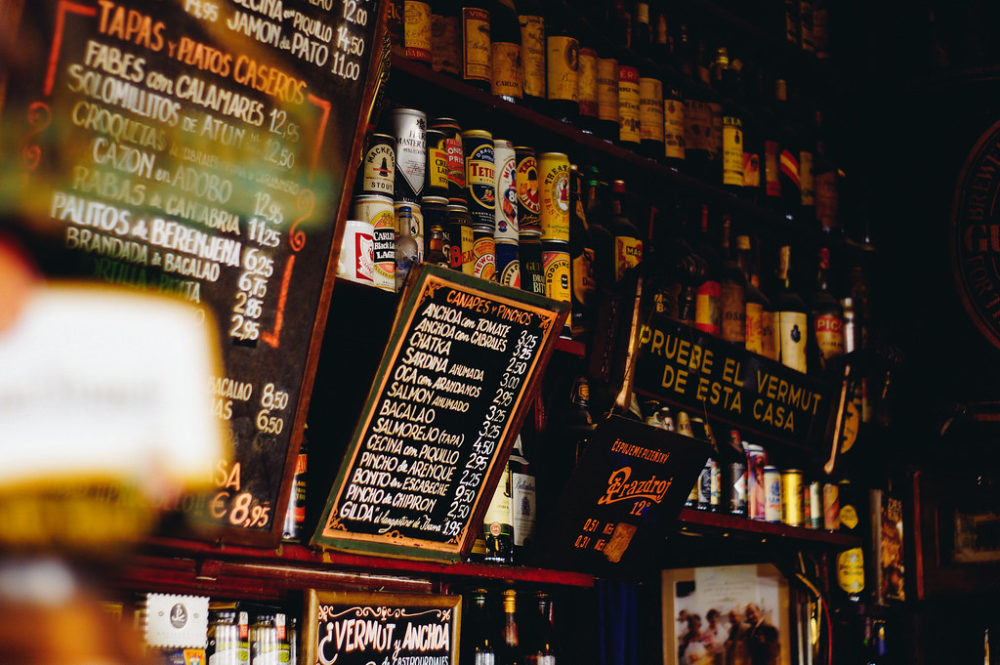
A selection of international ales at La Ardosa (Photo: José Hernández via Flickr / CC BY 2.0)